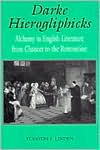Category Books
- Fiction Books & Literature
- Graphic Novels
- Horror
- Mystery & Crime
- Poetry
- Romance Books
- Science Fiction & Fantasy
- Thrillers
- Westerns
- Ages 0-2
- Ages 3-5
- Ages 6-8
- Ages 9-12
- Teens
- Children's Books
- African Americans
- Antiques & Collectibles
- Art, Architecture & Photography
- Bibles & Bible Studies
- Biography
- Business Books
- Christianity
- Computer Books & Technology Books
- Cookbooks, Food & Wine
- Crafts & Hobbies Books
- Education & Teaching
- Engineering
- Entertainment
- Foreign Languages
- Game Books
- Gay & Lesbian
- Health Books, Diet & Fitness Books
- History
- Home & Garden
- Humor Books
- Judaism & Judaica
- Law
- Medical Books
- New Age & Spirituality
- Nonfiction
- Parenting & Family
- Pets
- Philosophy
- Political Books & Current Events Books
- Psychology & Psychotherapy
- Reference
- Religion Books
- Science & Nature
- Self Improvement
- Sex & Relationships
- Social Sciences
- Sports & Adventure
- Study Guides & Test Prep
- Travel
- True Crime
- Weddings
- Women's Studies
Darke Hierogliphicks: Alchemy in English Literature from Chaucer to the Restoration »

Authors: Stanton J. Linden
ISBN-13: 9780813119687, ISBN-10: 0813119685
Format: Hardcover
Publisher: University Press of Kentucky
Date Published: September 1996
Edition: (Non-applicable)
Author Biography: Stanton J. Linden
Book Synopsis
"The literary influence of alchemy and hermeticism in the work of most medieval and early modern authors has been overlooked. Stanton Linden now provides the first comprehensive examination of this influence on English literature from the late Middle Ages through the sixteenth and seventeenth centuries. Drawing extensively on alchemical allusions as well as on the practical and theoretical background of the art and its pictorial tradition, Linden demonstrates the pervasiveness of interest in alchemy during this three-hundred-year period. Most writers — including Langland, Gower, Barclay, Eramus, Sidney, Greene, Lyly, and Shakespeare — were familiar with alchemy, and references to it appear in a wide range of genres. Yet the purposes it served in literature from Chaucer through Jonson were narrowly satirical. In literature of the seventeenth century, especially in the poetry of Donne, Herbert, Vaughan, and Milton, the functions of alchemy changed. Focusing on Bacon, Donne, Herbert, Vaughan, and Milton — in addition to Jonson and Butler — Linden demonstrates the emergence of new attitudes and innovative themes, motifs, images, and ideas. The use of alchemy to suggest spiritual growth and change, purification, regeneration, and millenarian ideas reflected important new emphases in alchemical, medical, and occultist writing. This new tradition did not continue, however, and Butler's return to satire was contextualized in the antagonism of the Royal Society and religious Latitudinarians to philosophical enthusiasm and the occult. Butler, like Shadwell and Swift, expanded the range of satirical victims to include experimental scientists as well as occult charlatans. The literary uses of alchemy thus reveal the changing intellectual milieus of three centuries.
Table of Contents
| List of Illustrations | ||
| Acknowledgments | ||
| Introduction | 1 | |
| 1 | "A Clew and a Labyrinth": Backgrounds, Definitions, and Preliminaries | 6 |
| 2 | "concluden everemoore amys": Chaucer and the Medieval Heritage of Alchemical Satire | 37 |
| 3 | Posers and Impostors: Sixteenth-Century Alchemical Satire | 62 |
| 4 | The Reformation of Vulcan: Francis Bacon and Alchemy | 104 |
| 5 | "Abstract riddles of our stone": Ben Jonson and the Drama of Alchemy | 118 |
| 6 | "a true religious Alchimy": The Poetry of Donne and Herbert | 154 |
| 7 | "that great & generall refining day": Alchemy, Allegory, and Eschatology in the Seventeenth Century | 193 |
| 8 | "Under vailes, and Hieroglyphicall Covertures": Alchemy in the Poetry of Vaughan and Milton | 224 |
| 9 | "Teutonick Chimericall extravagancies": Alchemy, Poetry, and the Restoration Revolt against Enthusiasm | 260 |
| 10 | Cauda Pavonis | 294 |
| Notes | 294 | |
| Bibliography | 344 | |
| Index | 361 |
Subjects
 Literary Criticism
Literary Criticism  Ancient & Medieval Literature
Ancient & Medieval LiteratureFiction Books & Literature
 Literary Criticism
Literary Criticism  English Literature
English LiteratureFiction Books & Literature
 Literary Criticism
Literary Criticism  European Literature
European LiteratureFiction Books & Literature
 Literary Criticism
Literary Criticism  General & Miscellaneous Literary Criticism
General & Miscellaneous Literary CriticismHistory
 European History
European History  British History - General & Miscellaneous
British History - General & MiscellaneousHistory
 European History
European History  General & Miscellaneous European History
General & Miscellaneous European HistoryNew Age & Spirituality
 Alternative Spirituality
Alternative Spirituality  Occultism
OccultismNew Age & Spirituality
 Witchcraft and Magic
Witchcraft and Magic  Occultism
OccultismNonfiction
 All Nonfiction
All Nonfiction  Alternative Spirituality
Alternative SpiritualityNonfiction
 History
History  European History
European History
